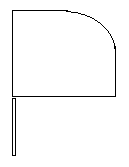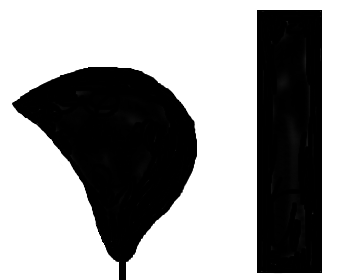Coifs
Coifs
Coifs are great for keeping you warm at night and they also keep you respectable during the day. Coifs should be worn by everyone over the age of 12. They are considered to be underwear and they should be worn underneath a formal hat by everyone unless they are engaged in manual labour.
There are two main styles of coif; the pre-1500 style that is made up of one or two pieces, after 1500 the 3-piece coif became more popular. I prefer the 3 piece design as it eliminates the wrinkles at the top of the head.
There are two main styles of coif; the pre-1500 style that is made up of one or two pieces, after 1500 the 3-piece coif became more popular. I prefer the 3 piece design as it eliminates the wrinkles at the top of the head.
Making a Coif Material: You can make them out of linen or wool, or, rarely, leather. Colour: Remember the whiter the coif the better the station.
The one/two piece design is simply an oblong of material, folded in half with a curve where the back of your head s hould be. This is then sewn to cover raw edges and cording or linen tape is attached.
hould be. This is then sewn to cover raw edges and cording or linen tape is attached.
 hould be. This is then sewn to cover raw edges and cording or linen tape is attached.
hould be. This is then sewn to cover raw edges and cording or linen tape is attached.The three piece coif is simple to make but getting the exact pattern to fit you can be hard. I would suggest using a scrap piece of material to establish your pattern before using your planned material. (The pattern is in black because it shows up better - a variant of cream is the prefered colour for a coif)
Cut out two of the above shape, then cut out a strip 2" wide and as long as the distance from the forehead to the back of the neck. Sew the strip between the two side pieces so that the strip sits on the top of the head and the other two pieces go down the side of the head. Adjust edges till it is tight fitting and you have removed the wrinkles. Add ties to the corners to tie under the chin.
Once you have a good three piece coif pattern you may like to line your coif, by using the same pattern for the inside. This will hide all of the seams of your coif.

